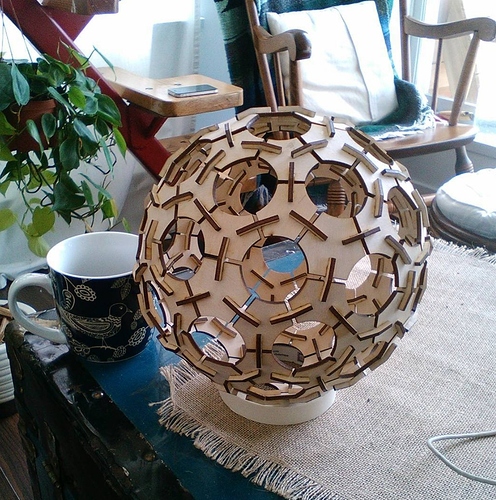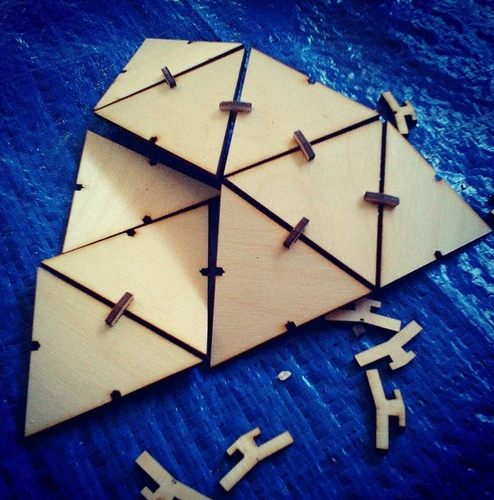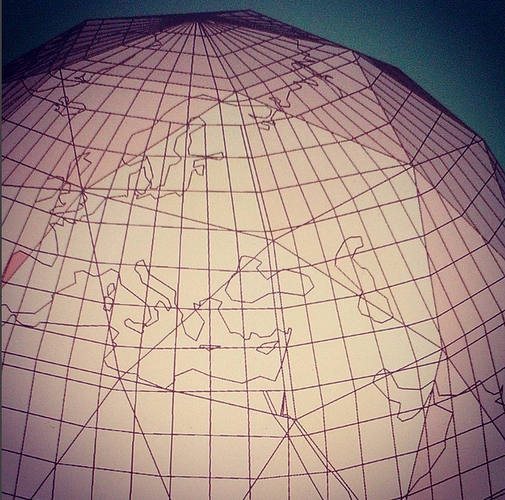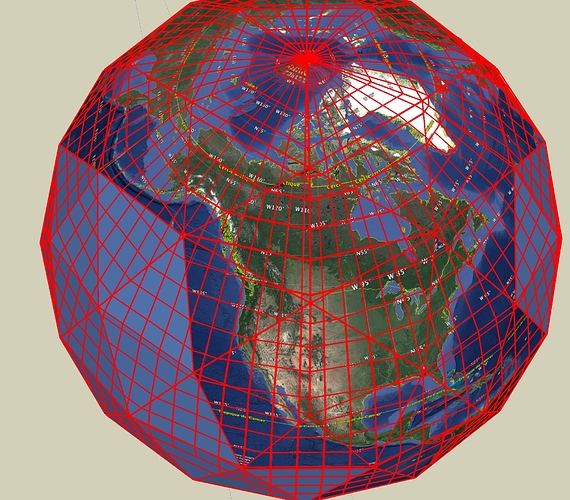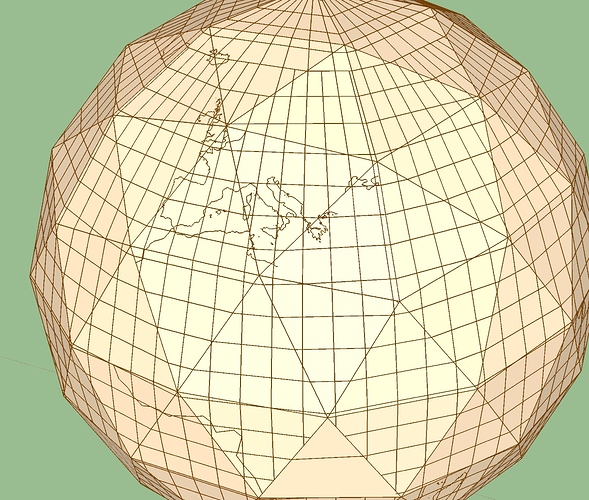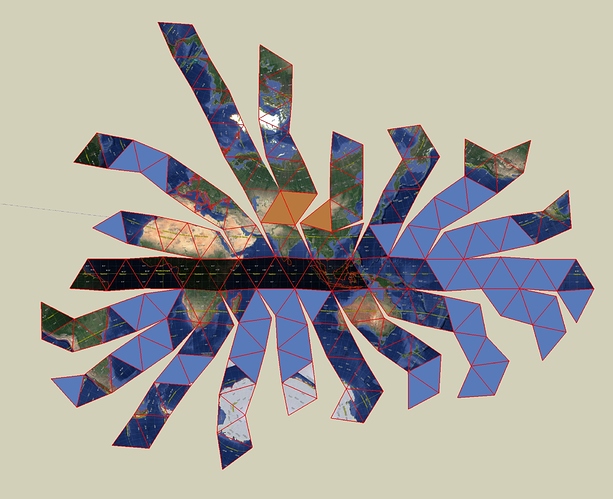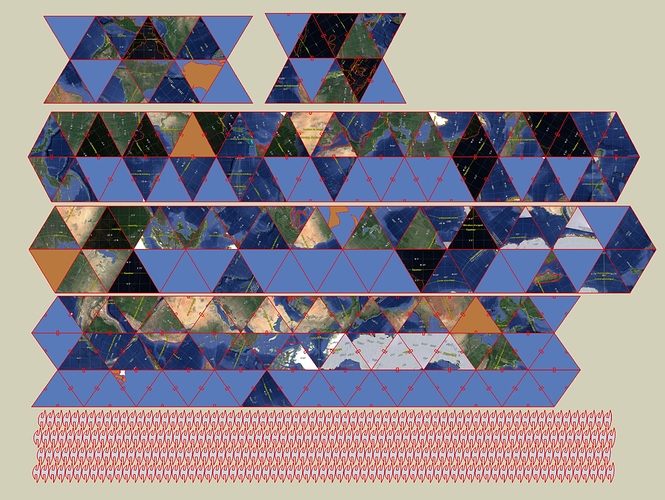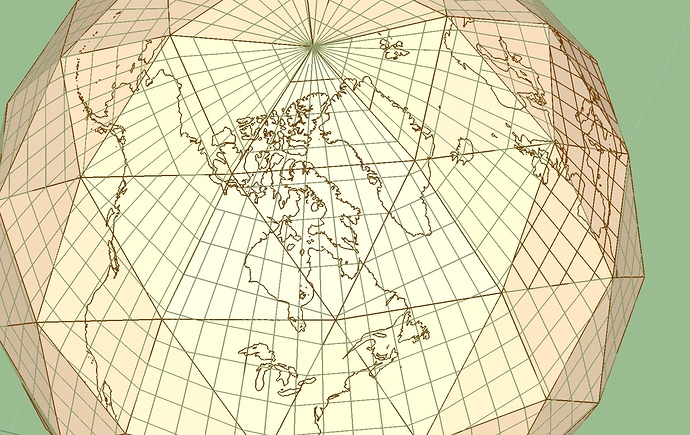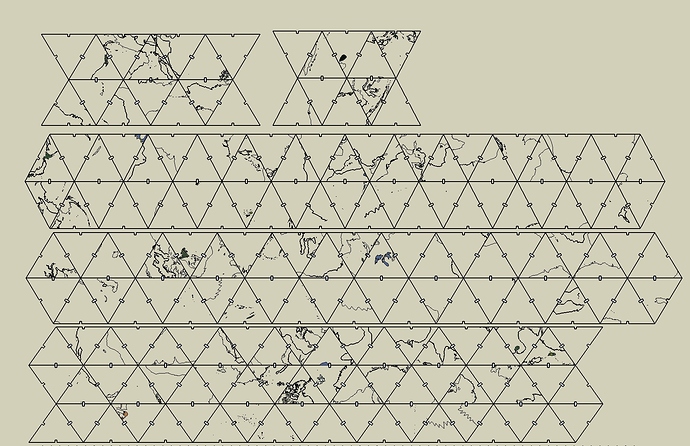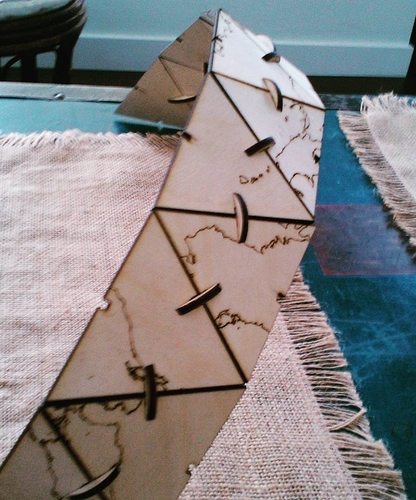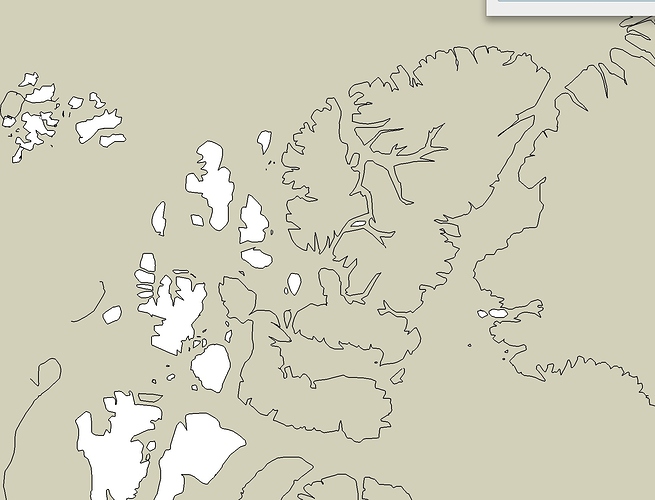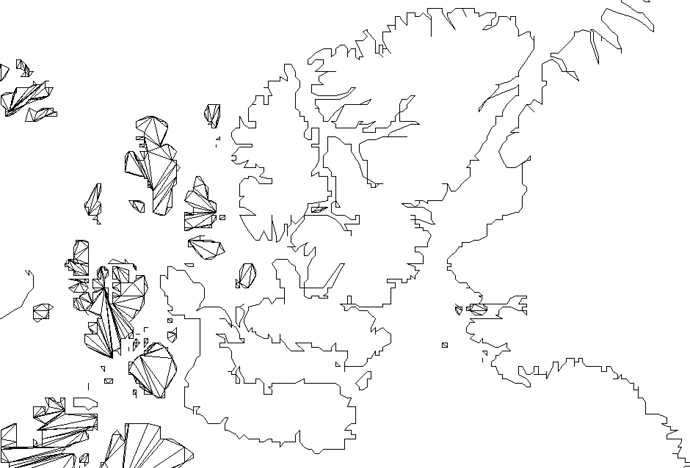Because the laser cutter is so cool, and my first simple (or not so simple) projects worked so well, I’ve dived into a way too complicated project : making an earth globe out of laser cut plywood.
I’ve considered stacking layers of topo cuts, but figured there is not enough relief to really make anything visible (unless it was huge).
Then I found this geodesic design online, which I cut and assembled
and it inspired me to make a geodesic version of an earth globe. One for me, and then, possibly more copies to sell as a cool puzzle.
I found a good source for geodesic models, not meant for laser cutting but I adapted one
and after many more tries than I was hoping I managed to get the pieces working.
But as you can see, the pieces are blank.
Because, well, extracting the contours of a map to project onto a geodesical sphere is quite a challenge.
Here’s my first version, a computer-hand-drawn rough outline of continents that took me hours and hours :
Now I figured this was too rough and majing it more precise by hand would be too long (switching between sketchup and google earth back and forth).
So I made hundreads of screenshots of gglearth, that I manually scaled and rotated to (almost) fit my triangles. That also took me hours
Cool, but not perfect. I supposed I could just fix the uneven borders when drawing over the textures. But freehand drawing on sketchup is pretty bad.
It still works, though, and you can tell I’m getting much better countours from following the satellite images. :
But still, it requires a lot of messing around with the “textured” sat photos to makes outlines fit from triangle to triangle.
So this is where I am : should I keep doing this by hand, making a very slow, hand made luxury piece of not so accurate map puzzle, or is there a way I could make a clean projection from google earth (or other) to triangles.
I’ve been searching the web for hours and hours, first to see how other people may have created laser cut wooden earth globes (poor results, which motivated me to create my own actually), then to figure out ways to make the process automatic.
I figured that anything mapping and projection related is a huge mess. I knew that, as I use GIS, but I never had to actually make a physical map of any sort. This is taking it one level further.
If anyone has a clue, I’m all ears!! (and if you just think this is a cool project, let me know, I’m starting to feel I’m losing my life trying to make this impossible thing!)
